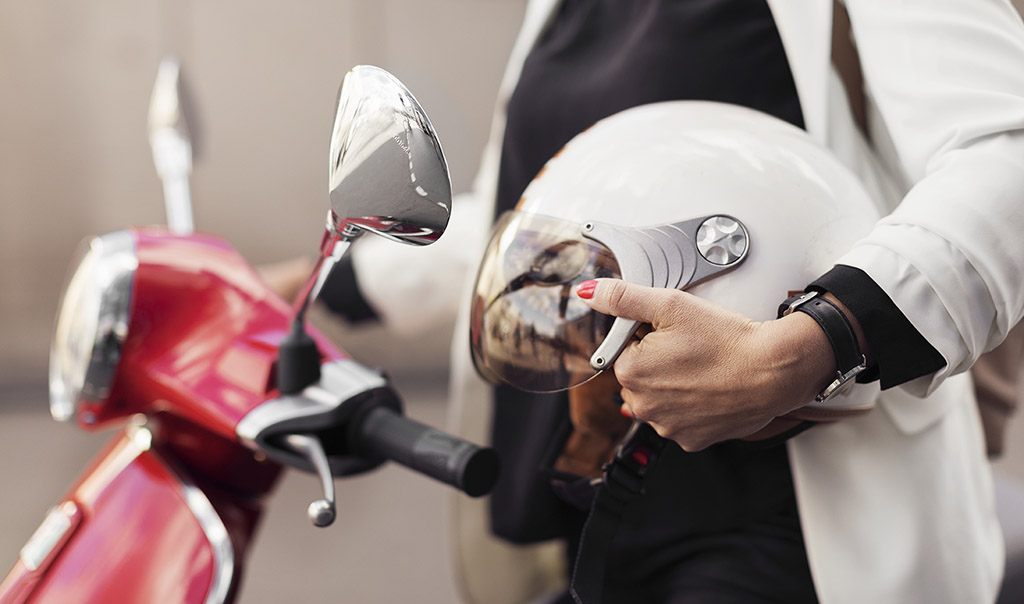Do You Need Insurance for Mopeds and Scooters?


If you're a moped or scooter enthusiast, it may not be legally necessary to insure your ride. However, depending on your state's laws, you may need to carry an insurance policy on these types of two-wheeled vehicles.
If you finance the purchase of, or lease one of these vehicles, the finance company will typically require insurance to protect its interest. Also, if you spent a significant amount of money on the bike itself, you may want to protect your investment by insuring it.
When you head out on your moped or scooter, you should always ride safely. However, in the event of an accident or other mishap, you'll want to be covered. Here are some insights about the differences between these two-wheeled motorized vehicles and the coverages that may be available.
Moped and scooter insurance coverages
Some common automobile policy coverages may be available for your moped or scooter. Check with your local independent agent or Travelers representative about these common coverages:
- Liability. If you are found responsible for causing damages as a result of an accident while riding your scooter or moped, liability coverage may cover those damages, up to the limit you select. Liability coverage applies to both damage you caused to another's property, as well as any bodily injury you caused to others as a result of the accident. Medical bills and lost wages are among the types of damages that may fall under liability coverage.
- Collision. Collision coverage helps cover the costs to repair your scooter if you collide with another vehicle or fixed object. Typically, the maximum collision coverage payout is the actual cash value of your scooter or moped, minus the deductible amount you chose when you purchased the policy.
- Comprehensive. Comprehensive coverage helps cover repair costs caused by non-collision-related events, such as theft, storm damage or vandalism. If your scooter is stolen or your moped is vandalized, both of these would typically be covered under your comprehensive insurance, up to the limits of your policy and minus your deductible.
- Medical payments. Medical payments may cover medical expenses to treat injuries to you or your passenger caused by an accident involving your scooter or moped, up to your policy limits. It doesn't matter whether the accident was your fault. Coverages vary by state.
- Uninsured and underinsured motorists. This coverage can help pay for damages such as medical costs resulting from an accident caused by someone who has no insurance or inadequate insurance coverage. In some states, it may be offered as a combined coverage, while in other states it may be offered as two separate coverages (one for uninsured and another for underinsured motorists).
How much does It cost to insure your moped or scooter?
The cost of insuring your moped or scooter varies depending on a number of factors. Depending on your state, certain coverages may be required. Basic liability and medical payments may be a part of a minimum requirement. However, as mentioned, typically only lenders will require that you secure collision and/or comprehensive coverage.
Premiums typically vary among insurance carriers that offer these policies. In states where a policy is optional, you may want to consider the cost of insurance versus the potential financial consequences of an accident in which your vehicle is damaged or injuries occur.
What's the difference between mopeds, scooters and motorcycles?
In general, a scooter is a two-wheeled vehicle that may be either a moped or a motorcycle, depending on three key details. If your two-wheeled vehicle meets all three of the following criteria, it is considered a moped:
- Engine displacement of 50 cc or less.
- A maximum of two brake horsepower.
- Not capable of exceeding 30 miles per hour on a flat surface.1
Conversely, if a two-wheeler has a manual gearshift, has an engine displacement that exceeds 100 cc, and can be operated faster than 30 mph on a flat surface, it is considered a motorcycle.2 Generally, motorcycles have an engine size that enables them to be operated on both local roads and highways.
Learn more about motorcycle insurance
Whichever two-wheeled vehicle you choose, we can help you find the coverage you need to help protect your ride. Learn more about motorcycle insurance.*



